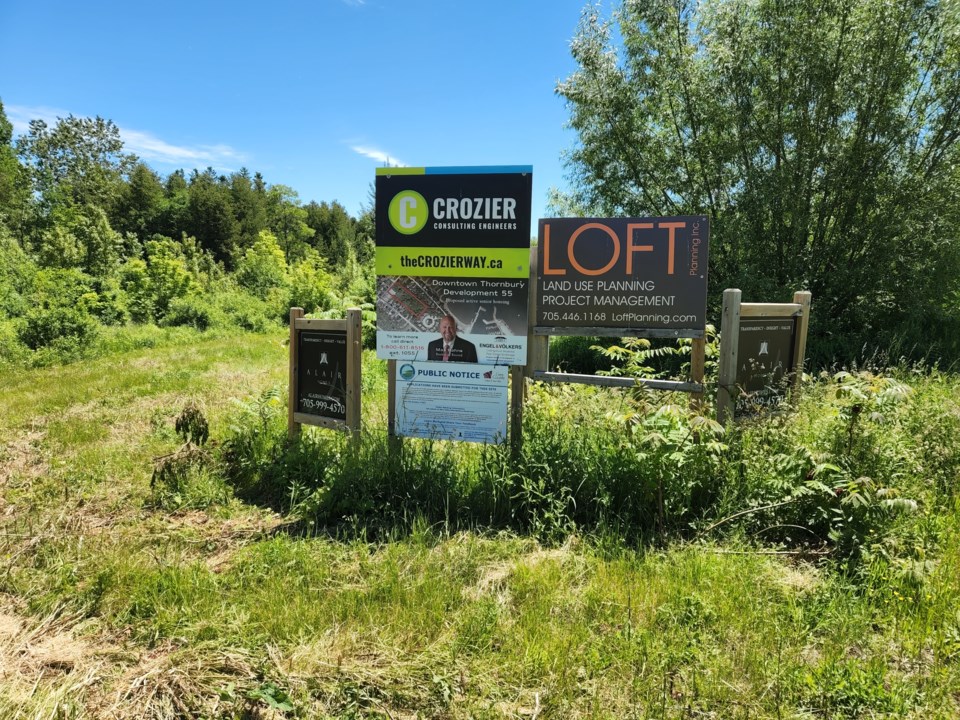There continues to be a sharp divide between the Town of The Blue Mountains and Grey County on the issue of affordable/attainable housing.
The issue has come to the forefront in recent weeks with The Blue Mountains appealing the county’s approval of the Abbotts subdivision to the Ontario Land Tribunal (OLT) over the lack of attainable/affordable units in the development.
Although both the town and the county say the issue is a significant priority, two divergent viewpoints have emerged. The Blue Mountains council insists there are tools in provincial policies to require developers to include attainable/affordable housing in their proposals. While the county says it doesn’t have the authority to add such conditions.
On June 6, a solicitor for The Blue Mountains Leo Longo, spoke to council about the recent OLT hearing on the Abbotts Subdivision. In its appeal, The Blue Mountains requested that, as a condition of approval, six of the 20 units in the subdivision be set aside as affordable units as defined by the Grey County Official Plan.
“We tendered evidence to attest to the affordability crisis and the steps the municipality is now taking to address that affordability issue,” said Longo. “The case we put forward was based on provincial policy and county policies as expressed in the county's Official Plan, which took effect in June 2019.”
At the hearing, Grey County countered by arguing it does not have any authority to impose such a condition. The county also argued that such a condition would amount to “expropriation without compensation.”
“The staff position was that we don’t have the legal authority to require a developer to provide affordable housing” said county Planning Director Scott Taylor.
In its arguments, the town cited the Planning Act and Provincial Policy Statement (PPS) to support its position.
Planning Act, s. 51(24) states
“(24) In considering a draft plan of subdivision, regard shall be had, among other matters, to the health, safety, convenience, accessibility for persons with disabilities and welfare of the present and future inhabitants of the municipality and to, (a) the effect of development of the proposed subdivision on matters of provincial interest as referred to in section 2;…”
Section 2 “Provincial Interest” states:
“The Minister, the council of a municipality, a local board, a planning board and the tribunal, in carrying out their responsibilities under this Act, shall have regard to, among other matters, matters of provincial interest such as,…
(j) the adequate provision of a full range of housing, including affordable housing;…”
Provincial Policy Statement which states at paragraph 1.4.3:
“Planning authorities shall provide for an appropriate range and mix of housing options and densities to meet projected market based and affordable housing needs of current and future residents of the regional market area by:
- establishing and implementing minimum targets for the provision of housing which is affordable to low and moderate income households….
“It’s clear the Planning Act sets out a provincial interest for the need for a range of housing,” said Longo.
County planners, however, maintain that the tools are not in place to allow imposition of such requirements on developers. Taylor noted that the 30 per cent target in the official plan is something the county “would like to achieve.”
“Had we had more tools, it could have been: ‘shall achieve’,” he added.
Taylor said the county will continue to push the province to provide more tools and policies that will support more affordable and attainable housing. He said one such possibility would be to allow inclusionary zoning for municipalities, which would give them the power to require a set percentage of affordable/attainable housing units in any development.
“It’s almost precisely what The Blue Mountains is looking for,” said Taylor.
Members of The Blue Mountains council were disappointed at the county’s stance at the hearing.
“I was quite surprised the county would actually oppose our position. The county has all this in their Official Plan, yet they’re the ones opposing us,” said Mayor Alar Soever.
Coun. Andrea Matrosovs said it will be very difficult to ever solve the problem without collaboration.
“If (the county) is not going to treat this as a must-have, how are we going to implement it at our level?” said Matrosovs.
Taylor said affordable and attainable housing is a front-burner issue for the county.
“This is of prime importance to county staff and council,” said Taylor. “This is a major priority of our council.”
The county has requested a delegation with the Ministry of Municipal Affairs and Housing at the upcoming Association of Municipalities of Ontario Conference to push for more tools to help with the issue.



